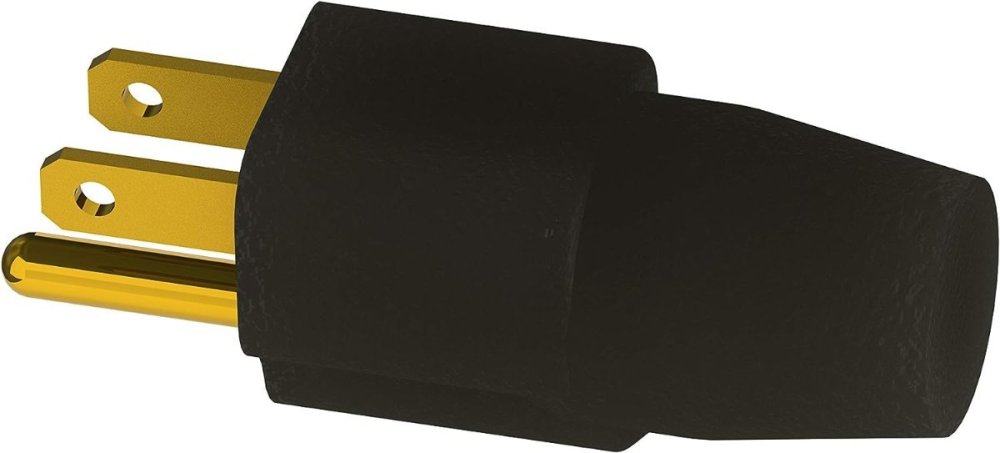-
Posts
922 -
Joined
-
Last visited
-
Days Won
18
Everything posted by Rivernerd
-
I concur with StillGame. I carry a 30A PowerWatchdog unit, which I plug into the campsite pedestal, then connect a 30A power cord to the PowerWatchdog. It saved me once from a bad power connection at the pedestal. Cheaper and easier to replace, if necessary, than the onboard EMS.
-

Water System upgrade for better water flow & pressure
Rivernerd replied to jd1923's topic in Ollie Modifications
No "1/2" PEX crimp system has a true 1/2" inside diameter (I.D.). No 1/2" PEX system has as much I.D. as a 1/2" copper system. That is why I installed 3/4" PEX lines, instead of 1/2", to high-demand fixtures in our home, such as the bathtub filler valves. That said, the 1/2" PEX crimp system in our Hull #1291 has worked fine for us. I would not want a water system capable of higher flow. Why? The limited size of the gray tank. We try to use water sparingly, to minimize how often we must dump the gray tank. With a plumbing system that small (compared to most homes systems), and with distances from the pump to the fixtures relatively short, we have not wanted increased flow rates at the kitchen or bathroom sinks. -

Water System upgrade for better water flow & pressure
Rivernerd replied to jd1923's topic in Ollie Modifications
60 PSI is an acceptable pressure level for most home plumbing. But, your home plumbing system does not get towed on bumpy roads. I would ask the Oliver Service Department if 60 PSI is acceptable for the plumbing parts they install. For example, I note that Oliver uses plastic push-to-connect fittings for many of its pex connections these days. Are those rated to 60 PSI? As you noted in other text, the more likely source of low faucet water flow is clogged filters, screens and aerators, not the pressure at the pump. -

Water System upgrade for better water flow & pressure
Rivernerd replied to jd1923's topic in Ollie Modifications
Always a wise precaution when using a Sharkbite, to verify proper penetration. -
Do you carry a multimeter in your Oliver? If so, check out the power readings at the campsite power pedestal. More often than not, EMS issues are caused by "dirty" power from a campsite pedestal. I always verify the voltage at the pedestal with my multimeter before plugging in my 30A power cord.
-
We bought a pair for installation when we took delivery in November, 2022. They have performed well. I expect they will last for many years to come, perhaps longer than the propane tanks.
-

12v only vs 12/120 compressor fridge
Rivernerd replied to C&MCurrie's topic in Mechanical & Technical Tips
I don't follow your logic. Are you using the term "converter" to refer to your inverter? When boondocking, my Xantrex inverter supplies 120V power, inverted from the 12V power supplied by my battery bank. When connected to shore power, my battery bank, not my inverter, supplies all 12V power in the trailer. But, my Xantrex inverter/charger recharges the 12V batteries when connected to shore power. And, when connected to shore power, my inverter supplies 120V power to the trailer in "bypass" mode, i.e., "bypassing" the inverter altogether. Since our Norcold runs on either 120V AC or 12V DC power, our Oliver trailer is wired for both. The logical choice for me would be a 120V/12V model, since the wiring should already be in place, and we could run the fridge on 120 when connected to shore power. Any other views from you engineer types on the forum? -
If you have the available space and budget, bigger is always better. I built a 30'x30' x 16' H (to the bottom of the rafters) "boat shed" for my raft trailer, rafts and related boating gear in 2018. It has a 16' W x 14' H garage door. It seemed spacious until the wife decided in 2020 that we needed an Oliver Elite II. Our 2021 Elite II fits in one of the two bays of the boat shed, but I have had to rig up some creative rafter storage for my rafts frames, etc. to make it work with my raft trailer on the other side. And, I am now out of storage space! So, we are laying plans to add another bay to it, hopefully beginning next spring. Moral of the story: If you can afford it, overbuild. You will never regret it. But, like me, you may regret underbuilding.
-

Options for Getting More Wattage during Shore Power
Rivernerd replied to Going Coastal's topic in Mechanical & Technical Tips
That has been our experience. -
Ouch! Are you in the middle of an extended trip in your Ollie? If so, buying 3 more AGMs may be the best way to complete your trip, presuming the one you just bought is still o.k. AGMs, although not cheap, will buy you another 4-7 years of service, during which time the price of lithiums may continue to drop. If you are at home, this is the time to "cut your losses" and make the switch to lithium. If I read your posts correctly, someone at Camping World told you it was o.k. to mix AGM with wet cell? Then, when it didn't work, they now want to sell you 3 more AGMs? If your one new AGM is fried, I would lean hard on Camping World to sell me 4 for the price of 3, as it was their advice that killed your first AGM in the first place. Good luck!
-
Anything but "plug and play." Unless you are an experienced DIYer, it is wise to hire it done. I would not be surprised if you can find a local RV repair shop to do a lithium upgrade, perhaps with Battleborns rather than Lithionics, for much less than $11K+a drive to Hohenwald. This thread may give you a starting point for the learning process:
-
Although 4 years is on the short end of the optimal lifespan for wet cell batteries, replacing just one battery in the bank will ultimately be "penny wise and pound foolish." In your shoes, I would "bite the bullet" and invest in a completely new battery bank. And, if you can afford it now, I would upgrade to lithium.
-

Generator power not going into trailer
Rivernerd replied to DonnaDuane's topic in Welcome To The Oliver Travel Trailer Forums
A neutral bonding plug plugs in to one of the 120V receptacles on your generator. It looks like the image below. Your Oliver electrical system will not accept power from a generator without one: -

Newbies taking the plunge - Are we missing anything
Rivernerd replied to Dennis and Melissa's topic in General Discussion
I concur. I always carry a Safe Jack 6-ton RV Jack Kit when trailering. See the thread linked below, with one caveat: I have found that the 2x6 piece into which I drilled a hole to hold the jack post broke after couple of uses. So, I adopted the suggestion of another forum member and cut most of one side off of the u-shaped attachment, so it does not impinge on the wiring just inside of the frame at the jacking point. I now use the modified u-shaped attachment, for a secure grip on the frame when using the Safe Jack. I also lower all three "stabilizer" jacks to supplement the support provided by the Safe Jack if I am ever putting any part of my body under the trailer. -

elite 2 The wait
Rivernerd replied to Jason Foster's topic in Welcome To The Oliver Travel Trailer Forums
My favorite English professor in college used to write romantic stuff to his wife. He once wrote their initial relationship was like "sweet wine," but that over the years as the relationship deepened, she became more essential, like "morning bread." He reported that the "morning bread" analogy was not well received... -
Yes, you can. It is my understanding that you simply turn the batteries back on after the BMS turns them off at the RVC level. BUT, that is for emergencies only. If you use the Lithionics batteries for too long after reaching RVC, you can permanently damage them. I would only turn the batteries back on after reaching RVC to run the jacks and get the trailer hooked up to my tow vehicle, then I would turn the batteries off again. I would then tow the trailer to a place where I could fully recharge the battery system. That is one reason I carry a generator when boondocking: so I can recharge should the batteries ever get down to the "shutdown at RVC" point without having to find 30A shore power somewhere.
-
2-3% daily loss seems reasonable to me, given that the only 12V power draw is for the battery heating mat. As the heating mat has a thermostat, and only turns on when ambient temps fall below a preset level, I expect the extent of power draw depends on how cold the weather gets. Per Lithionics Storage Procedure Rev. 7, I keep our Hull #1291 connected to shore power, and perform the procedure for draw-down to Reserve Voltage Cutoff (RVC) every 3 months while in winter storage. I expect your system of draw-down and recharge every 3 weeks or so accomplishes the same purposes (keeping the Lithionics batteries from freezing and periodically "exercising" the lithium batteries), but requires more frequent monitoring.
-
Yes. After disconnecting shore power, I started out by just leaving the 12V lights on to run down our 390 Ah Lithionics Lithium Pro Package battery bank. After a couple of days, I chose to accelerate the draw-down process by running a 120V space heater plugged into a receptacle with the inverter on. After a few more hours that day, the BMS in the Lithionics batteries shut them down, as they had reached Reserve Voltage Cutoff (RVC). I then re-connected shore power. I put our Hull #1291 into storage in our shed in early November this year. In early February, I plan to not only turn on all of the 12V lights after disconnecting shore power, but start out with a space heater plugged in to a receptacle, running off of the inverter. I will then monitor every few hours, until the BMS shuts the batteries down at the RVC level.
-

Smoke from lower fridge (Dometic 3 way) compartment
Rivernerd replied to Liana's topic in Mechanical & Technical Tips
As Geronimo John suggested, you can still operate the 12V tongue jack from the batteries so long as the circuit breaker to the refrigerator is off. That is the easiest way to operate the tongue jack. -
-
I am encouraged by the report that the Georgia dealer is listing the trailers for the same price Oliver is still selling them in Hohenwald. Perhaps, unlike sales of "stick and staple" trailers and most cars and trucks, Oliver dealers will not play the "jack up the asking price, then squeeze the buyer for every last nickel of extra profit" game. Time will tell.
-
This thread has made me wonder if I should carry my combustible gas detector in our Oliver. If a CO/LP detector alarms, it would make it easy to quickly verify either (a) the location of any propane leak or (2) the absence of such a propane leak. That might avoid camping in cold weather with no propane appliances operating for fear of an explosion!
-

New Oliver Advertisement - Winter Camping Adventure
Rivernerd replied to Patriot's topic in General Discussion
That meerschaum pipe looks like the one Ulysses S. Grant used for years. No surprise he died of throat cancer.... -
The Elite II trailers now being made, which include the Truma Varioheat furnace system, can be used in temps down close to single digits F without modification. The thread below includes my report using the stock trailer down to an ambient outside temp of 11 degrees F last year. With the furnace set at 70 degrees F, temps in the lower, more exposed parts of the trailer did not get below 38 degrees F, so I did not worry about plumbing freezing. The thread also contains lots of ideas for mods to expand the cold-weather capability of an Oliver trailer. With the right mods, it appears the Oliver can be used (with the plumbing not winterized) in temps down to the single digits F, so long as the furnace is kept running.
-
I presume your battery bank consist of four 6V AGM's wired in series? If so, I must defer to the expertise of others on this forum, who are more experienced with 6V systems, for the "best" answer. That said, it seems to me that the "safe harbor" is to: (1) take a photo of the battery bank wiring so you can replicate it later; (2) remove one battery at a time from the battery tray, and then (3) using the Repair mode, with the charger set for 6V batteries, begin the repair/recharge process on the first battery. I would monitor progress with a multi-meter every 6-8 hours or so. Then swap out the remaining three batteries one at a time. One advantage of this approach is that you may be able to isolate any truly dead battery or batteries in the set and just replace it/them, since your batteries are only 1 year old. Do any of you electrical engineering types out there disagree? Presuming he has 6V AGMs wired in series to create a 12V battery bank, is it o.k. to just attach the leads from the charger to one of the positive and one of the negative terminals, and recharge/repair the entire bank using the 12V setting?









